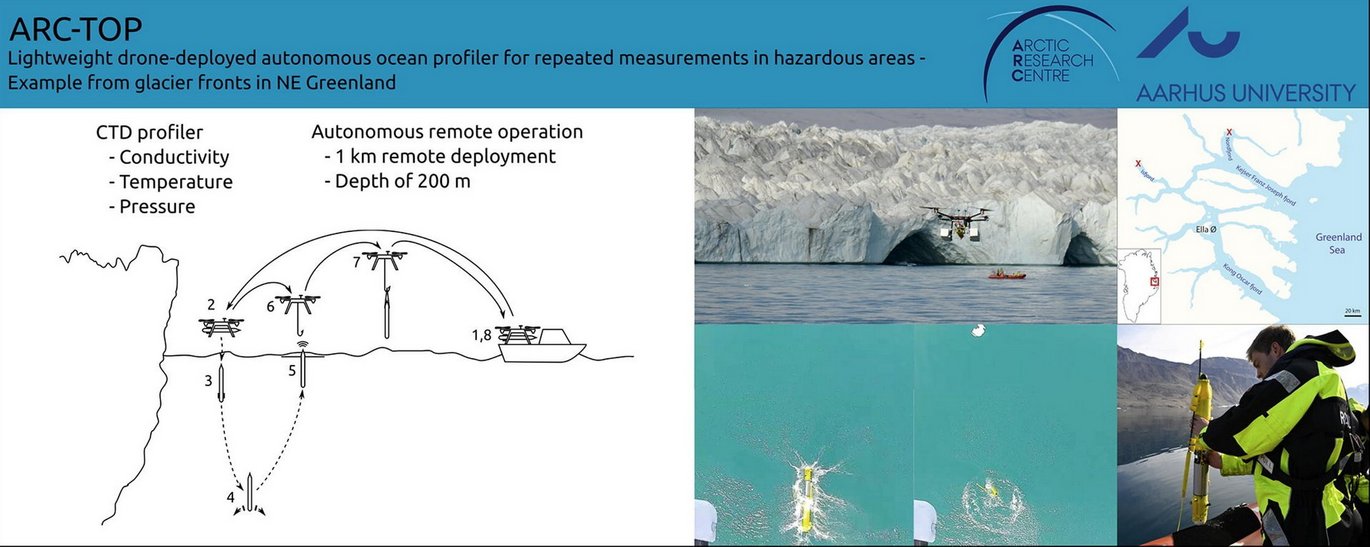Lightweight drone-deployed autonomous ocean profiler for repeated measurements in hazardous areas – Example from glacier fronts in NE Greenland
New publication by Ebbe Poulsen, Mathias Eggertsen, Erik H. Jepsen, Claus Melvad, Søren Rysgaard

Abstract:
Accelerated melting of ice in Polar Regions due to global warming increases freshwater input to coastal waters from marine terminating glaciers. Lack of measurements near the glacier terminus limits our knowledge of the mixing processes between freshwater and the underlying ocean.
We present a low-cost (< € 3200) and lightweight (2.6 kg) drone-deployed, retrievable conductivity, temperature and depth (CTD) instrument for remote controlled (1 km) autonomous profiling in highly hazardous and remote areas. The instrument was deployed with a drone taking off from land and marine vessels to perform measurements near tidewater glaciers termini of the Greenland ice sheet.
The free-flowing profiler is reusable due to a compact ballast based single-shot buoyancy engine and post-profiling pickup by drone. It can reach a depth of up to 250 m, and is equipped with low-cost sensors for conductivity, temperature, and depth measurements.
During decent the profiler reaches a velocity of about 0.48 m/s, resulting in about 3.5 data points pr. m depth, but is designed to easily vary the velocity by changing buoyancy setup before deployment.
Successful tests were conducted at marine terminating glaciers in Northeast Greenland in August 2021.
